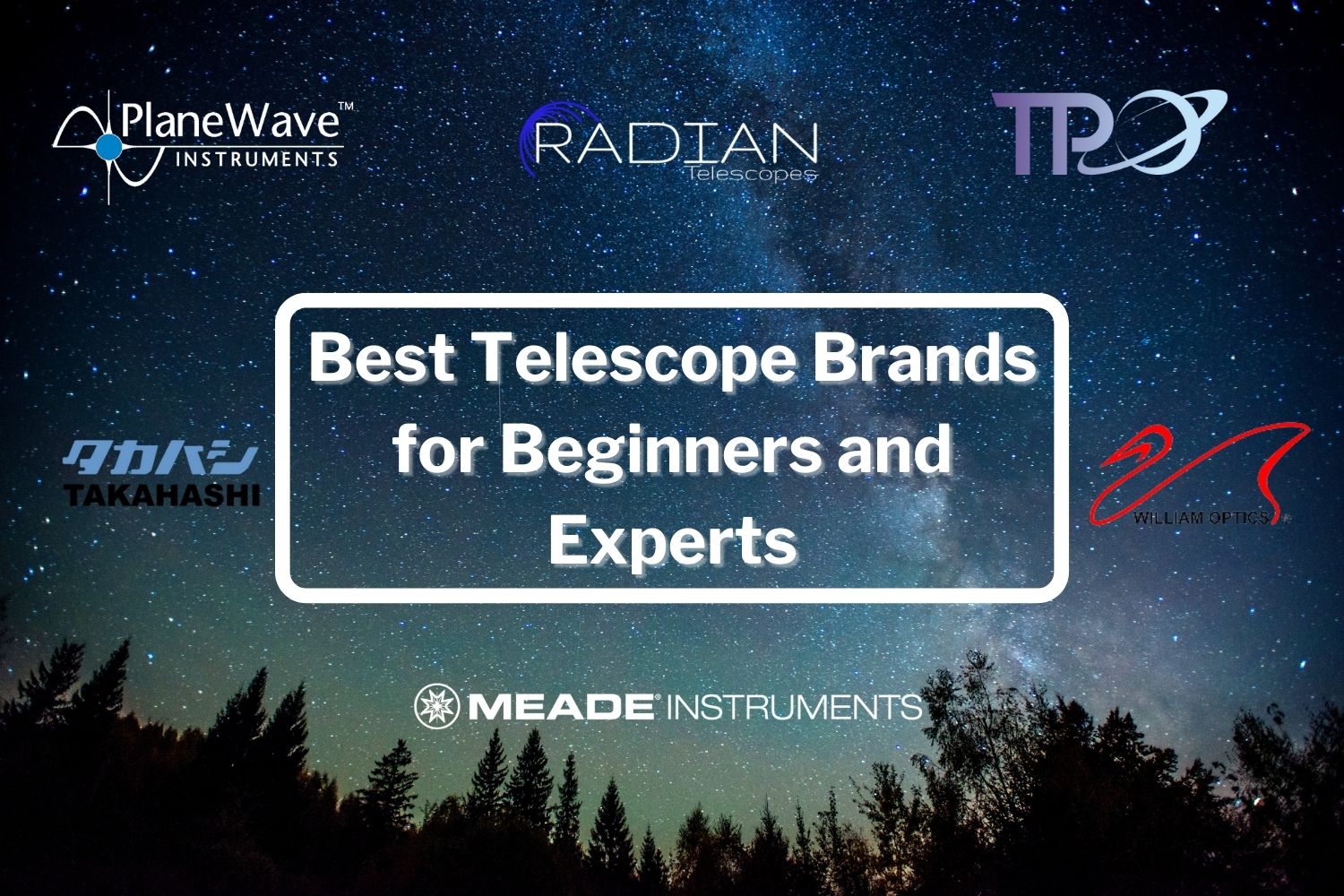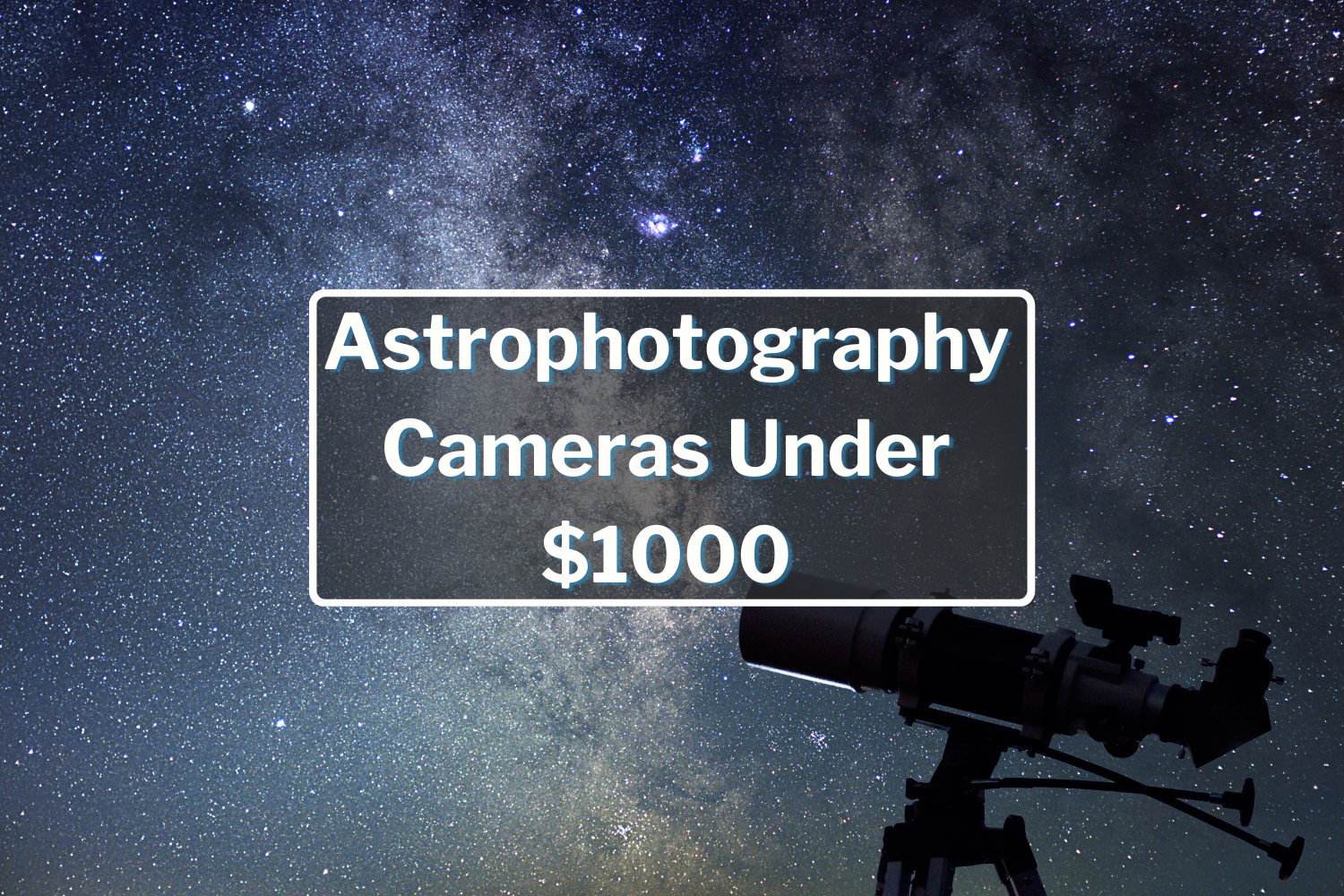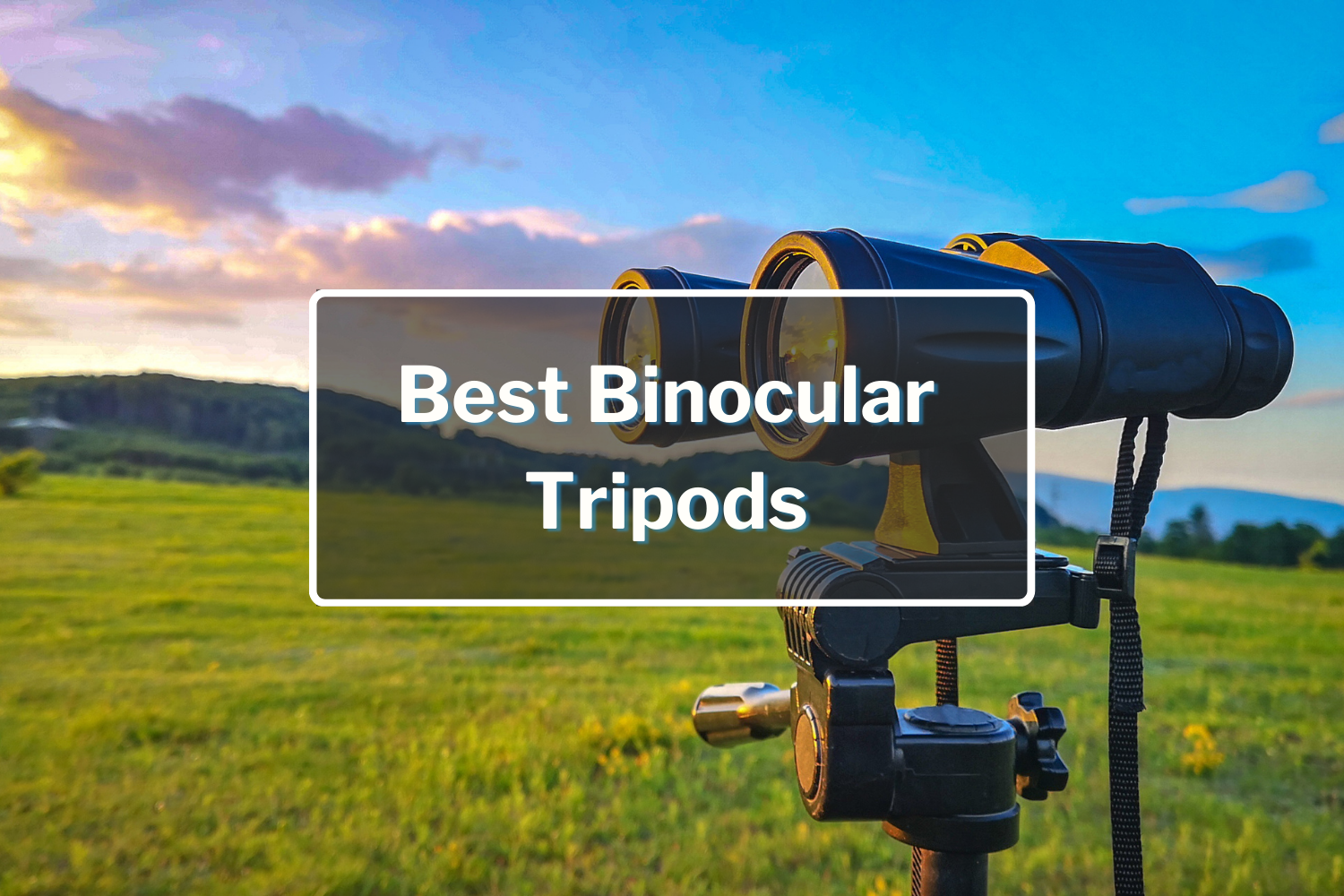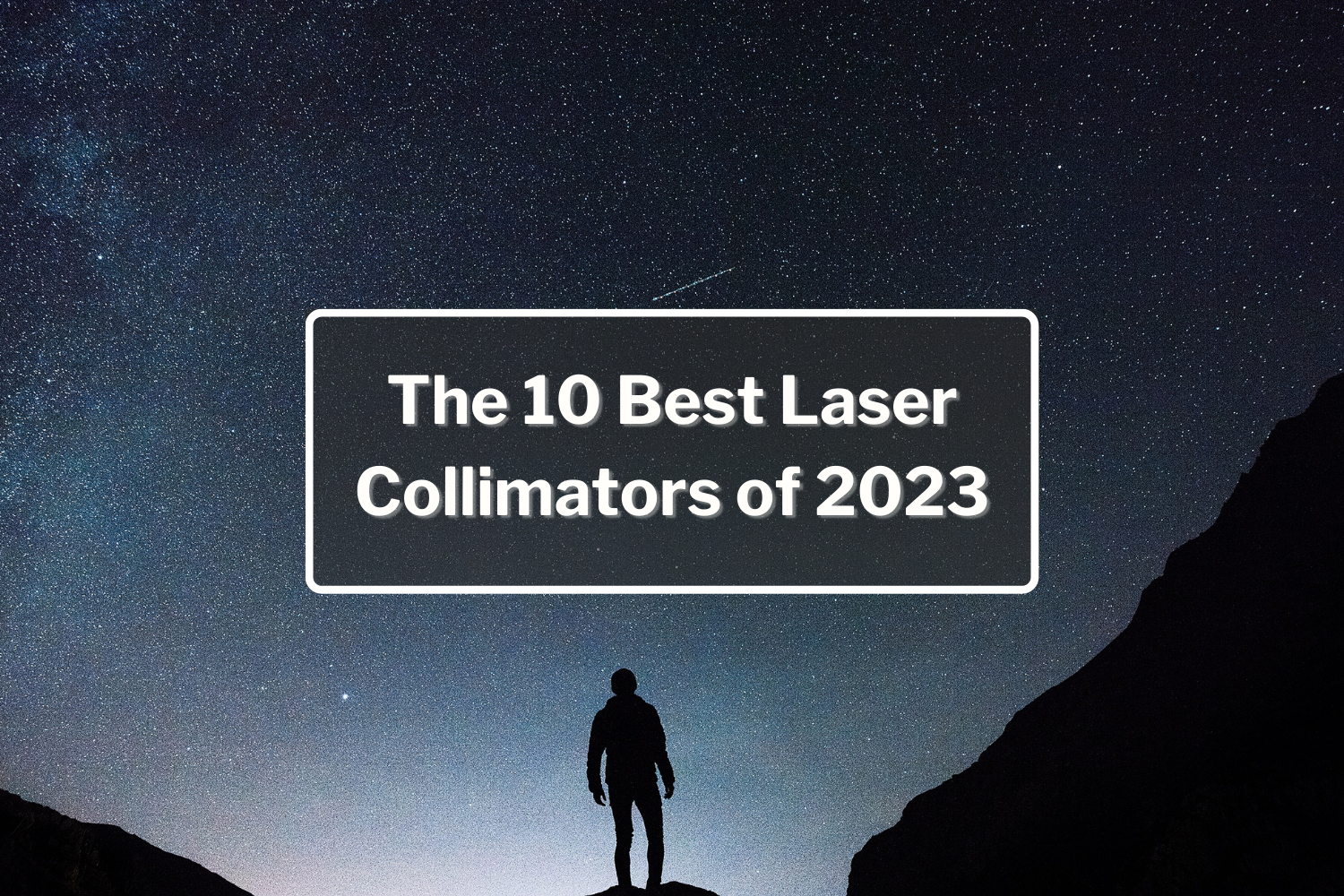Which Telescope To Buy? Pros & Cons of 12 Popular Telescope Designs

Looking to buy a telescope, but aren't sure which one to get? In this guide, we dive into the pros & cons of all the popular consumer telescope designs, including the various types of refractors, reflectors, and catadioptrics out there. If you're not sure what those terms mean yet, don't worry! Just head to our blog post titled The Basic Telescope Types before reading more, and you'll be in good shape. When you're ready to begin, read on below to find the type of telescope you're curious about. If you're looking for more personalized guidance, our expert team is always standing by ready to help you find the perfect telescope. Click the button below to get in touch!
Types of Telescopes to Buy
Types of Catadioptric Telescopes
- Schmidt-Cassegrain (SCT)
- Maksutov-Cassegrain
- Rowe-Ackerman Schmidt Astrograph (RASA)
- Maksutov Newtonian
Types of Refractor Telescopes
Refractors, much like camera lenses, use a series of glass lens elements to bring an image into focus. Light enters through the front lens element, is refracted (bent) into focus by other lens elements, and exits through the rear of the telescope and into an eyepiece or camera. Refractors are the simplest and most lightweight telescope design. Cheap refractors are often poorly made and can suffer from heavy chromatic aberration, otherwise known as color fringing, where bright objects like stars and planets can have colored halos around them. High-quality refractors, on the other hand, can provide some of the best views and images of any telescope design, but are the most expensive to produce. A small, widefield refractor is the best choice for those looking to begin astrophotography beyond a camera lens.
Achromatic Doublet Refractor

Beginner | $-$$ | Best for beginner visual observers
An achromatic doublet is the most affordable and simplest kind of telescope. These are some of the most common telescopes, and just about all beginner refractor telescopes will be an achromatic doublet design. By definition, an achromatic doublet uses two lenses to partially correct for chromatic aberration, or color fringing. The two lenses can allow both red and blue light to reach the focal plane at the same time, but green and magenta light arrive separately, making for colored halos around brighter stars, planets, and the moon. This makes for less-than-ideal viewing and imaging, but still plenty good enough for most beginners. An apochromatic telescope will provide much better views and images. In addition, doublets will generally have a longer focal ratio than higher-end refractors like triplets, which translates to more zoom but means some dim objects like galaxies may be too faint to spot. However, achromatic doublets can be a solid starting point for amateurs looking to enter the hobby as they are the most inexpensive kind of telescope.
Pros:
- The most affordable of any kind of telescope
- Lightweight and compact for portability
- Easy-to-use and intuitive for beginner visual observers
Cons:
- With heavy chromatic aberration, views are only so-so
- Long focal ratio means galaxies and nebulae are harder to spot
- Lower cost scopes usually have a not very sturdy mount
Apochromatic Doublet

Intermediate ┃ $$ - $$$ | Best for beginner astrophotographers
Technically, a truly apochromatic (APO) design uses a three lens system to bring red, green, and blue light into focus on the same focal plane, which generally eliminates all chromatic aberration. However, many manufacturers use the term “APO doublet,” which is why it is included here. An “APO doublet” is actually just an improved achromatic doublet (two-lens) design that utilizes higher quality glass (like extra-low dispersion or ED) and/or coatings (like Fluorite) to achieve performance closer to a true apochromatic triplet telescope. This provides nearly chromatic-aberration-free visual views, but chromatic aberration may still be slightly present in images, particularly on bright objects like planets, the moon, and bright stars. However, APO doublet telescopes have greatly advanced in quality in recent years, so some higher-end APO doublets can now rival lower-end true APO triplet telescopes. APO doublets are a great choice for those looking for good optical performance at a lower cost.
Pros:
- Can offer near-triplet quality at a much more affordable price
- Slightly lighter weight than triplets of the same focal length
- Light enough to be used on a star tracker style mount
Cons:
- Will usually still produce minor chromatic aberration
- Most APO doublets will not be able to rival a true triplet
- A field flattener (extra cost) is necessary for imaging
Apochromatic Triplet

Intermediate to Advanced ┃ $$ - $$$$ | Best for serious deep sky imagers
The apochromatic (APO) triplet is widely considered to be the holy grail of the refracting telescope world. Utilizing a true apochromatic design, triplets can focus red, green, and blue light at precisely the same point, unlike doublets. Assuming the glass is of high quality, this lends to almost no chromatic aberration, which makes for excellent visual observing performance. For imaging, apochromatic triplets may show some violet halos around stars due to colors that exist outside the visual range, but these are usually removable in post-processing. Unlike quadruplets, triplets suffer from slight field curvature which means a field flattener is needed for imaging, which often come in the form of a field flattener/focal reducer combo.
Pros:
- APO triplets with high-quality glass suffer from almost zero aberrations
- One of the best all-around scopes you can buy
- Requires very little maintenance vs. a reflector or catadioptric
Cons:
- One of the most expensive telescope types if comparing by aperture
- A field flattener (extra cost) is usually necessary for imaging
- Has a smaller aperture than similarly-priced reflectors or catadioptrics
Petzval / Quadruplet

Intermediate to Advanced ┃ $$ - $$$$ | Best for widefield imaging
Unlike doublets and triplets, Petzvals (also known as quadruplets) have a field flattener incorporated into the design, meaning you don't have to purchase an extra field flattener or reducer/flattener. The downside is that most Petzvals aren't designed to be easily used visually, so it's safe to assume that nearly all Petzvals are designed with deep sky astrophotography in mind. Due to their design, many Petzvals have very short focal ratios which also makes them ideal for widefield imaging, particularly of large targets. This combination makes them great imaging telescopes, but it also usually makes them very expensive. Telescopes of the quadruplet design can be the priciest of any kind of refractor, often costing a few thousand dollars or more. There are a handful of quadruplet options in the sub-two-thousand-dollar range, but they come with the tradeoff of having a shorter focal length than a similarly-priced doublet or triplet.
Pros:
- Have the fastest focal ratios of any refractor for much shorter exposures
- A field flattener is built in and ready-to-go for large sensor imaging
- Generally small and lightweight
Cons:
- One of the most expensive telescope types if comparing by aperture
- Short focal ratio makes smaller targets difficult, best for widefield imaging
- Typically reserved for deep sky imaging only, unlike other types of refractors
Types of Reflector Telescopes
Reflectors use mirrors to bring an image into focus, which differs from how refractors use glass lenses. Light enters through an opening in the front, which passes down to a curved primary mirror in the rear. From there, the light is then reflected back up the tube to a smaller, secondary mirror, where it finally reflects out into an eyepiece or camera. Since the secondary mirror is suspended by struts known as spider vanes, images from reflectors will show (usually cross-shaped) spikes on brighter stars. Reflectors will produce images that are upside-down through the eyepiece which can be difficult for terrestrial/daytime viewing, but this doesn’t matter much if you’re just observing the night sky.
Newtonian

Beginner to Advanced ┃ $ - $$$ | Best for low-cost, fast focal ratio imaging
The Newtonian (Newt) is the simplest form of the reflector telescope. Light enters through the front, passes down to a parabolic (curved) mirror, bounces back up to a secondary mirror angled at 45°, and finally out of the tube into an eyepiece or camera. Some Newtonians come packaged with a mount, and these are good for beginner visual observers. Newtonians sold as just the telescope only are often designed for astrophotography. Unlike refractors, Newtonians typically have short focal ratios (usually f/4 or f/5) and have larger apertures for their cost and do not suffer from chromatic aberration (color fringing). However, coma, which causes elongated stars away from the center, is an issue for imaging. A coma corrector is needed for deep sky astrophotography, especially with larger sensor sizes like APS-C or full frame. Newtonians can be a good choice for experienced astrophotographers as their fast focal ratios can let in light faster than most telescopes. However, being larger than refractors, they are prone to slight movements in light winds, which is bad for imaging unless you have a large and capable equatorial mount. They also need to be collimated (calibrated) nearly every observing session if imaging. Newtonians are less forgiving than refractors, and are therefore not recommended for beginner deep sky imagers.
Pros:
- Good for beginners looking for a low-cost telescope with a large aperture
- Fast focal ratio means more light gathering and shorter exposure times
- Much less expensive than other telescopes for deep sky astrophotography
Cons:
- A coma corrector (added cost) is needed for serious imaging
- Requires frequent maintenance in the form of collimation
- Much larger and heavier than refractors, requiring a large mount
Dobsonian

Beginner to Advanced ┃ $ - $$$$ | Best for serious visual observers of all skill levels
The Dobsonian (Dob) telescope was invented in 1965 by amateur astronomer John Dobson. Although the Dobsonian more so refers to the type of mount, most people refer to Dobs as a type of telescope anyway. Dobsonians use a Newtonian telescope on a modified alt-azimuth mount that is very easy to use. Unlike most mounts, the Dobsonian mount does not utilize a tripod. Instead, it uses a swivel design on the ground (like a lazy Susan) that allows the telescope to rotate freely, plus two arms on either side to allow it to move up and down easily. Because there is no need for a tripod, it allows the telescope to be much larger than any other telescope type. “Dobs” are incredibly popular with visual observers, as they provide the largest apertures for the lowest price and are easy to operate. Dobs are also the easiest type of telescope to build yourself. If you're strictly planning to observe visually and are willing to learn how to navigate the night sky, a Dobsonian is often the way to go. Since Dobs utilize an alt-azimuth mount, they are not well suited for deep sky astrophotography, but can be successfully used for planetary, lunar, or ISS imaging.
Pros:
- Provides excellent visual views with comfortable viewing
- Best bang-for-your-buck visual telescope for all types of objects
- Easiest type of telescope to build yourself, can do some planetary imaging
Cons:
- Alt-azimuth mount make Dobs a poor choice for deep sky imaging
- Often large, heavy, and difficult to transport
- Rarely has GoTo functionality, meaning you have to manually point it
Ritchey-Chrétien

Intermediate to Advanced ┃ $ - $$$$ | Best for imaging small deep sky objects & research
The Ritchey-Chretién (or RC) telescope is a variant of a Cassegrain telescope. Instead of using parabolic primary, RCs use hyperbolic mirrors, which make them more expensive than other reflectors of equivalent aperture. This lends to increased optical performance as coma is nearly eliminated, but instead means they suffer from another aberration called astigmatism, which appear as “wings” on either side of bright stars towards the corners. Their focal ratios of around f/6 to f/9 make them excellent for serious deep sky astrophotography. They are not ideal for planetary work as their large central obstruction is large which lowers contrast. They are not recommended for visual use for the same reason, but some people don't mind the lower contrast views. The RC is the one of the most popular optical designs for professional research telescopes, such as the Hubble Space Telescope and Keck Telescopes. In recent years, they have become more affordable for consumers. Lower-end RCs can be difficult or sometimes impossible to collimate properly, so it's best to spend a little more on a quality RC if possible.
Pros:
- Excellent for serious deep sky astrophotography
- Folded optics make for a compact and lightweight design
- Affected by very few aberrations making it great for research
Cons:
- Not recommended for visual due to large central obstruction
- Though coma-free, still suffers from astigmatism and field curvature
- Can be expensive for good quality compared to others
Dall-Kirkham & Other Cassegrains

Intermediate to Advanced ┃ $$ - $$$$ | Best for planetary imaging & research
Though less common, telescopes like the (non-corrected) Dall-Kirkham and Classic Cassegrain designs are excellent reflectors used primarily for planetary viewing and imaging. Since these telescopes use an all-mirrored design, they are usually considered superior to other planetary telescopes like Schmidt-Cassegrains or Refractor telescopes of the same aperture, which use glass lens elements and can introduce chromatic aberration. Dall-Kirkhams and Classic Cassegrains do not suffer from any chromatic aberration (color fringing) and have very long native focal ratios, making them the ideal choice for high-end and research-grade planetary observing. Most of these telescopes are very expensive and have this specialized use, but excel at long focal length viewing and imaging.
Pros:
- Excellent for planetary viewing & imaging
- A folded optical design makes for a compact size
- Lighter than a Schmidt-Cassegrain or other catadioptric
Cons:
- Requires collimation and can be difficult to find since they are rare
- Very long focal ratio is poor for deep sky imaging
- Long focal length is difficult to use, especially for beginners
Types of Catadioptric Telescopes
Catadioptric (also known as compound) telescopes combine refraction and reflection elements by including both a front corrector lens and at least one mirror as well. Light enters through the corrector lens, reflects off of the primary mirror, and then typically reflects off of a secondary mirror back down the tube and into a camera or eyepiece. This folded optical design allows for long focal lengths in compact packages and avoids most of the common aberrations found in refractors or reflectors. Schmidt-Cassegrains offer the ability to drastically reduce their focal length, making them the most versatile of any telescope design.
Schmidt-Cassegrain Telescope (SCT)

Beginner to Advanced ┃ $$ - $$$$ | Best single all-around telescope
The Schmidt-Cassegrain Telescope (SCT) is a highly popular design with consumers, as it features a long focal length (usually 1500mm or more) and focal-ratio (usually around f/10) which makes it a great choice for planetary/lunar viewing and imaging. SCTs feature a folded optical design which allows for long focal lengths in a lightweight and compact package. In addition, it features a Schmidt corrector plate in front which corrects for most types of optical aberrations, resulting in a cleaner image overall. SCTs are only made by two telescope manufacturers: Celestron and Meade. Higher-end SCTs, known as the EdgeHD series from Celestron and ACF from Meade, feature even better correction towards the edges which make them well-suited for deep sky imaging with large sensor cameras. Schmidt-Cassegrains are one of the most versatile types of telescopes, as higher-end SCTs can be used with focal reducers of multiple sizes. The typical f/10 SCT can be converted into an f/6.3 or f/7.1 system when using a reducer, or even be converted into an f/2 system with the use of a Hyperstar.
Pros:
- Great for planetary and lunar viewing & imaging
- Folded optics make for a shorter and lighter design
- Highly versatile, especially with use of a focal reducer for deep sky
Cons:
- Double the price of most reflectors for the same aperture
- Long native focal ratio means narrower views and longer exposures
- Secondary obstruction has less contrast and needs occasional collimation
Maksutov-Cassegrain

Beginner to Intermediate ┃ $ - $$$$ | Best for visual planetary observing
The Maksutov-Cassegrain, or Mak-Cass for short, is very similar to the Schmidt-Cassegrain design in that it uses a folded optics design of a corrector plate, primary, and secondary mirror. There are two main differences between a Mak-Cass and an SCT. The first is the corrector plate, which is generally much thicker on a Mak-Cass. This means that Mak-Casses will take a longer time to adjust to air temperature outside than an SCT will. The second is that Mak-Casses usually have longer native focal ratios than SCTs do. While SCTs are usually set around f/10, Mak-Casses are generally around f/12 to f/15. This makes them a poor choice for viewing or imaging deep sky objects due to longer exposure times, but a rather good choice for viewing and (basic) imaging of solar system objects like planets and the moon. Unlike SCTs, Mak-Casses are much less compatible with focal reducers, which make them much less versatile than SCTs overall. However, they are generally great optical performers at their native focal ratio and can be less expensive than SCTs.
Pros:
- Ideal for planetary and lunar viewing & imaging
- Folded optics are shorter and lighter than reflectors and refractors
- Generally more affordable than SCTs
Cons:
- Less versatile than SCTs as they’re stuck at one focal length
- High quality Mak-Casses can be very expensive (i.e. Questar)
- Long focal ratios make them poor for deep sky imaging
Rowe-Ackerman Schmidt Astrograph (RASA)

Intermediate to Advanced ┃ $$ - $$$$ | Best for widefield, fast focal ratio imaging
The Rowe-Ackerman Schmidt Astrograph (RASA) design is a modified version of the Schmidt Cassegrain Telescope. Unlike SCTs, there is no secondary mirror in a RASA that bounces the light back down the tube and out the back of the scope. Instead, the light enters through the front corrector plate, bounces off the primary mirror, but then exits through a series of additional corrector lenses in the center of the corrector plate. This means that the camera (the RASA design is incompatible with visual observing) is unconventionally mounted on the front of the telescope. This results in an extremely short/fast focal ratio with a large aperture, around f/2. What this means is that although the RASA design does not have a very long focal length, exposures can be very short and still achieve stunning astrophotographs. This is similar to an SCT design with a Hyperstar, but since it is optimized for the short focal ratio, the RASA has better imaging performance. It is recommended to use a cylindrically-shaped astronomy camera (like ZWO) when using the RASA (especially the 8” model) instead of a DSLR or mirrorless camera. Additionally, due to the design, filter wheels cannot be used with the RASA. However, single filters may still be used for narrowband imaging with a special filter drawer.
Pros:
- Best consumer scope available for widefield images of deep space
- Ultra-short focal ratio of around f/2 means much shorter exposures
- Short exposures of 30-60 seconds means autoguiding isn’t usually necessary
Cons:
- Expensive compared to other telescopes of similar focal lengths
- A one-trick pony; less versatile than an SCT with a Hyperstar setup
- Can only be used for imaging, not visual use
Maksutov-Newtonian

Intermediate to Advanced ┃ $$$ - $$$$ | Best alternative to APO triplet at a lower price
The Maksutov-Newtonian, or Mak-Newt, is similar to a standard Newtonian design, but the difference is that it incorporates a corrector lens plate, which makes it a catadioptric and not a reflector. The use of the corrector plate greatly helps correct for coma compared to a standard Newtonian. An equivalent aperture Mak-Newt has around 350% less coma and makes stars 3.6 times smaller. Unlike Newtonians, Mak-Newts do not need a coma corrector for deep sky imaging. The corrector plate also replaces the spider vanes holding up the secondary mirror, which means there are no diffraction spikes like on a Newtonian. Like SCTs, Mak-Newts require occasional collimation, but much less frequently than Newtonians. Of course, these benefits come with two main drawbacks: a higher price tag, and an overall heavier telescope. Like Newtonians, the long tube means they are quite prone to wind. Due to a sealed tube design, Mak-Newts take awhile to cool down to ambient air temperature, and they attract dew easily. Overall, though, Mak-Newts are excellent optical performers, and some amateur astronomers even feel they provide similar views to APO refractors of the same aperture for a fraction of the price.
Pros:
- Excellent optical performers can rival much more expensive telescopes
- Relatively short focal ratio means shorter exposures
- No coma corrector required and much less coma than a Newtonian
Cons:
- 2-3x more expensive than similar aperture Newtonians
- Requires occasional but precise collimation and a long cool-down time
- Longer tube compared to other catadioptrics make them much heavier and more prone to wind
Still need help deciding, or have a more specific question? Our expert team is standing by and ready to answer anything you throw our way. Click the Contact button or leave a comment below!
3 Responses
OPT
Hey Robert! Thanks for your feedback. We are happy to know you enjoyed this article. Clear skies!
Robert Gruel
Great informative article!












Steve Walsh
June 25, 2022
I agree – an excellent article and very useful.